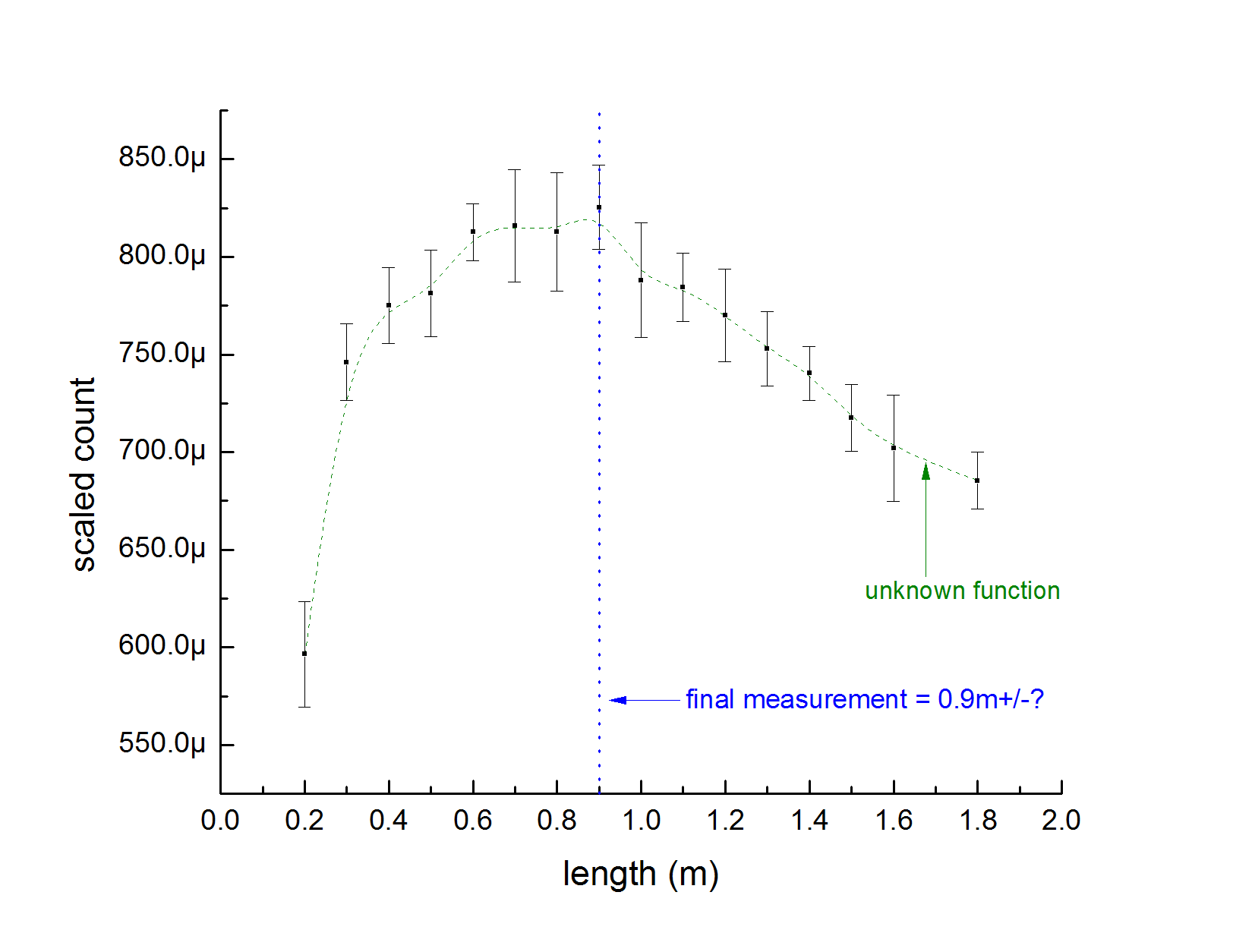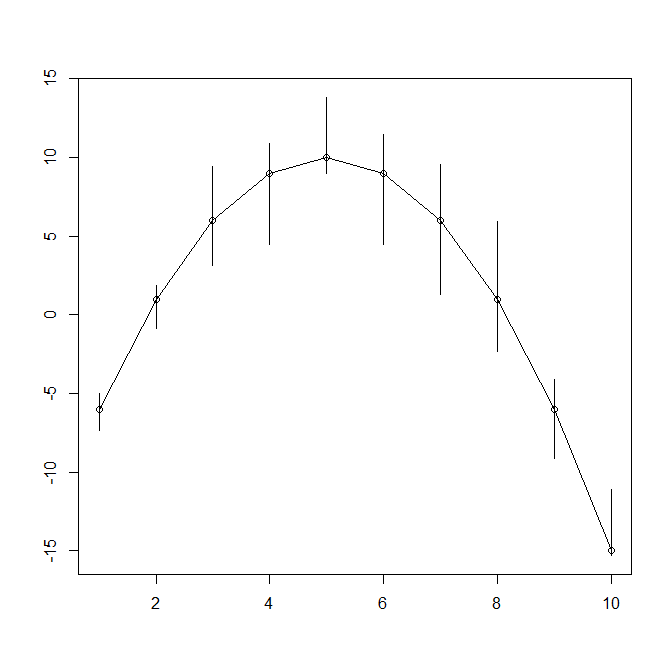I have a collection of data points, which are counts as a function of length. Each data point is the result of many trials and has an error bar. The function Counts(length) is unknown.

In the end the measurement that I need to quote is the length $X_m$ at which counts are a maximum (so in this case $X_m=0.9m$). Since the data are noisy, there is an uncertainty associated with $X_m$ (i.e., $X_m$ looks like it could be 0.6m-1m). If I knew the function that described these data then I could get an error on the fit parameters, but I have no information on what the function should be, so how to extract an uncertainty? I suppose I could create a hundred data sets like this, find the $X_m$ for each one and find the uncertainty that way, but it seems like that method ignores the information given by the error bars on all the points.
Is there a formalism for figuring out the uncertainty on a parameter of an unknown function?


